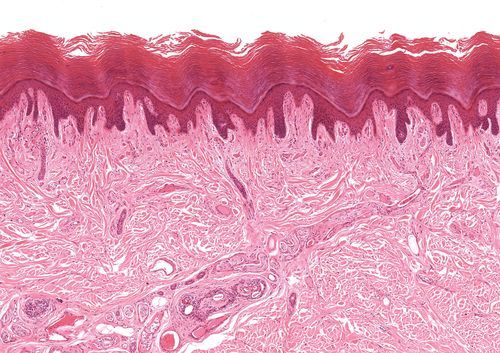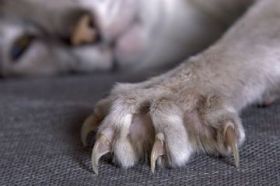The integumentary system varies greatly from animal to animal. In most animals, there is a layer or more of epithelial cells constituting the integument, called the epidermis , an underlying nutritional layer, called the dermis and an impermeable cover, the cuticle .
However, the integument can be only one cell thick in single-celled organisms, such as bacteria and protozoa, being the cell membrane itself. Among vertebrates, there are also a variety of appendages , such as hair, scales, horns, claws and feathers.
The integumentary system has several functions, the main ones being: protecting the body from the invasion of microorganisms and dehydration , also controlling body temperature and receiving stimuli from the external environment through sensory receptors.
Vertebrate Integumentary System
There is a great diversity of integuments among vertebrates, related to the adaptation of these animals to the environment in which they live. Just remember the many white hairs of the Arctic bear, the shell of armadillos and turtles, the feathers of chickens or an eagle, or even the scales of so many species of fish, to understand the variety of this system.
Skin Layers

The cells of the epidermis, originate in the basal part and move upwards, becoming more flattened. When they reach the most superficial layer (horny layer), the cells are dead and are composed mostly of keratin. In terrestrial vertebrates, this layer of cells is eliminated periodically, as in reptiles that change their skin, or continuously in plaques or scales, as in mammals.
The dermis consists of connective tissue, blood and lymphatic vessels, nerve endings and smooth muscle fibers. It is a layer of variable thickness, whose irregular surface with protrusions (dermal papillae), is inserted in the recesses of the epidermis.
Skin Appendages
Glands
They are exocrine glands because they secrete their products to the surface of the epidermis. They can be tubular or in the form of a bag, they can be secreted continuously, periodically or only once, they can be found grouped, alone, or branched.
There are several types of substances that can be secreted, like this: poison glands secrete toxins, sebaceous secretes oil, ceruminous ones secrete wax, mammary glands milk, odorous various odor substances, mucous membranes that release mucus. In aquatic animals, there are mucous glands to lubricate the body and reduce friction with water. In deep sea fish, there are epidermal glands modified in structures called photophores, which produce light.
Horns and Antlers

They are very hardened corneal projections, found in mammals. They consist of a cone of keratinized cells and fibers , which grow from the epidermis. The fibers, similar to a thick hair, grow from the dermal papillae, whose cells produce a kind of cement that binds the fibers together, keeping them together. In buffaloes, goats and other ruminants hollow horns are found, which are extensions of the frontal bone of the skull, covered by a horny layer. In the deer, the antlers are bony structures without any epidermal coverage, only in the young it is covered with skin, which gives a velvety texture.
Pigment Cells
In fish, amphibians and reptiles there are chromatophores that are branched cells, responsible for rapid color changes. In birds and mammals, melanocytes are found , branched cells that produce melanin granules that are transferred to cells in the granulosa layer of the skin.
Claws, Nails and Hooves

They are keratinized corneal structures, modified according to the animal. The claws are curved and sharp and are present in many vertebrates; it is believed that it was the first type of nail that appeared, the nails and hooves being derived from it. The nails are present in mammals and help the animals to grasp objects or food. The hooves are like thicker nails, curved around the end of the finger.
Feathers and Hair
The feathers consist of a type of keratin , believed to have evolved from reptile scales. They are exclusive structures of birds and are changed periodically. These structures are extremely light and do not impair flight. There are different types of feathers: the contoured ones help to define the body shape and during flight and the plumes under the body, act as insulators.
Invertebrate Integumentary System
In most Arthropods the body is segmented, with rigid plates connected by flexible membranes making up the exoskeleton , consisting of chitin fibers . There is an epidermis whose basement membrane secretes the cuticle. In some species, the cuticle undergoes sclerotization , giving a keratin-like consistency. In crustaceans, limestone substances are incorporated into the cuticle. There is also a layer of wax that waterproofs the body surface, thus preventing dehydration of these animals.
The epidermis of the clam has many functions as in higher animals. The ciliated epithelium helps snails to move and bivalves to feed. Cephalopods (octopuses and squids) have luminous glands and pigment cells that encourage them to change color quickly. The shells are composed of an outer layer of calcium carbonate, a middle layer of calcite and an inner nacreous layer (also called mother of pearl) secreted by the epithelium of the mantle (fold of the epidermis). The pearl is formed when a foreign body invades the shell, being surrounded by the nacre and growing along with the animal.
In the cutaneous system of the Cnidaria in addition to the epithelial cells, there can be different types: spinous, pigmentary and sensory cells with hair. The external surface may contain flagella or microvilli, some have polyps and others have an external limestone skeleton.
The sponges have a simple epithelium called pinacoderme , some have calcium carbonate spicules just below the epithelium in mesoglea.
